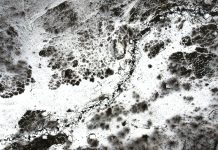Rishika Kenkre
Staff Writer
Due to recent genetic research, Gaëtan Dugas, formerly known as “Patient Zero,” has been exonerated from the accusations of being the one to have brought AIDS to the United States.
During the early 1980’s, the previously-unknown AIDS disease emerged in the United States. Doctors couldn’t pinpoint the reason why people in several major cities started to have immune deficiencies, skin cancers, and opportunistic infections.
To understand the causes of of these medical conditions in the U.S., scientists at the Centers for Disease and Control Prevention (CDC) conducted a study by interviewing these patients. Forming a network of 40 infected men who were all linked together through sexual encounters, the researchers began to realize that AIDS is characteristic of a sexually transmitted disease.
Gaëtan Dugas appeared to connect the people from coast to coast, by having sex with patients from both California and New York. Being the 57th AIDS patient to grab the attention of the CDC, the organization initially called him Case 057. Once the researchers found out that he was not a U.S. resident, the scientists called him “Out-of-California patient” or “Patient O” for short.
In the publication of CDC’s research, the study misinterpreted Dugas’ reference of “Patient O” to be “Patient 0.” This reference meant that he was thought of as the reason for the U.S. AIDS epidemic, and possibly the source of the entire epidemic.
Like a game of misinformed telephone, the interpretation worsened. The journalist Randy Shilts published the book “And the Band Played On,” telling his audience about AIDS and the story of Dugas. In this book, Shilts constantly referred to Dugas as “Patient 0,” communicating to the readers that Dugas had a crucial role in the AIDS epidemic.
Although the study did not identify him as the source of the AIDS epidemic, other journalists and commentators clearly spread the blame.
This literature then caused an immense amount of media to reach the public. The New York Post published a headline proclaiming “The Man Who Gave Us Aids”. TIME magazine had a story called “The Appalling Saga of Patient Zero.” “60 Minutes” added a segment on him.
Through this media, Dugas became known as an evil and foreign villain. People viewed him as the one to blame for the AIDS epidemic. Media further perpetuated this blame. It became a vicious cycle.
Instead of the villain that media had portrayed him as, others described him as kind and charismatic. He volunteered at an organization to serve people with HIV. He flew to the CDC in Atlanta to donate blood samples and gave the CDC a set of names of people that could potentially have AIDS, being instrumental in the research of AIDS.
Unfortunately, the prejudices against homosexuality and the unrestrained, unsafe promiscuity that caused the issue to come to the U.S. was too strong. The Reagan administration decided to decrease funding to AIDS research and purposefully sent agency heads to mislead Congressional committees by claiming that they had all the funds necessary.
The concept of Patient Zero has diminished in its importance, as researchers have now found evidence that HIV, the virus behind AIDS, arrived in the U.S. much before Dugas was even infected.
Through the collaboration of Richard McKay, a medical historian at the University of Cambridge, and Michael Worobey, a University of Arizona evolutionary biologist, the new study exonerates Dugas. Worobey managed to sequence all of the genomes of HIV from the U.S. sample, clearly showing that there was no way Dugas was the first AIDS patient in the U.S. What might have actually happened is that the disease entered the U.S. from Haiti, but had gone unnoticed until the CDC study.
HIV initially infected people in West Africa, as it jumped from chimpanzees to humans. It then expanded, altering the make-up of the genes and affecting people in different ways. Through sequencing of genes and their changes, researchers can rebuild a family tree of HIV: a phylogeny.
In 2007, Worobey used blood samples from Haitian immigrants to reconstruct this phylogeny. His research suggests that the virus stopped in the Caribbean in route from Africa to the U.S.
Worobey came across samples that had been gathered from infected men in New York to study Hepatitis B. With evidence that identified patients with HIV, he was able to sequence the history of the entire HIV genome. It exonerated Dugas from the blame of bringing HIV to the U.S. by tracing the spread of HIV from traveling from Africa to the Caribbean in 1967 and then arriving in the U.S. around 1971.
From NYC, it traveled to San Francisco and formed new clusters of infection. As it spread from coast to coast, it genetically diversified, leading to a variety of disease strains. The new research shows that Dugas did not only bring AIDS to the U.S. but also did not spread it from coast to coast.
The sexual network created by the CDC team just shows the sexual networks of forty people that contracted the virus, but does not show the transmission of the disease. This study demonstrates how instrumental genetics can be in rebuilding the path of an outbreak.















